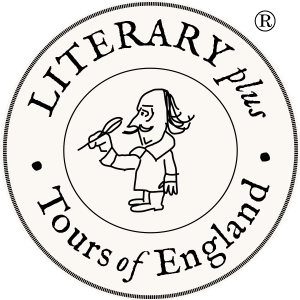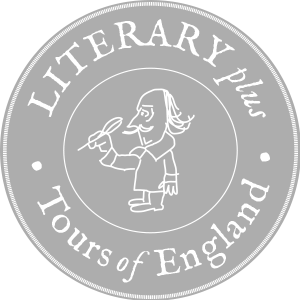
Shakespeare's Birthplace
William Shakespeare
Newstead Abbey
Lord Byron
Shaw's Corner
George Bernard Shaw

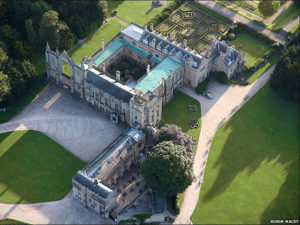
Newstead Abbey
Lord Byron
The tours begin and end at London Heathrow airport (LHR).
The details below describe the tour highlights. Supplementary sites and stopping points will be included wherever feasible. All tours can be customized. So, once you’ve made a selection, we’ll contact you to review and refine the itinerary to reflect your personal preferences.
The guide prices shown below relate to escorted tours and assume double room occupancy in luxurious 4- or 5-star city center hotels. The actual price of your tour will depend on the make-up of your tour party, your accommodation preference, special needs, seasonal variations, availability and currency exchange rates. You will be provided with a firm quote before you book.
Guide price $4,650 per person (escorted / based on 2 people)
Oxford
Nicknamed “The City of Dreaming Spires” by Matthew Arnold, Oxford is famous the world over for its University (the oldest in the English-speaking world). The city is a treasure trove of literary connections. JRR Tolkien spent most of his life here: he wrote The Hobbit while teaching at Pembroke College. CS Lewis – subject of the wonderful film Shadowlands (1993) starring Anthony Hopkins – taught at Magdalen College for 29 years. Both were members of The Inklings, a group of Oxford-based writers that met for literary conversation in the Eagle and Child pub. University College houses an extravagant memorial to Percy Bysshe Shelley, a one-time student who was expelled for his radical views. The city center is so compact that walking is the best way to visit many of the sights, including locations used in the Harry Potter films (2001-11) and the memorable TV series Inspector Morse (1987-2000), its sequel Lewis (2006-15) and prequel Endeavour (2012 to date).
A few miles north of the city, in the village of Woodstock, is Blenheim Palace: the stateliest of all stately homes and a World Heritage Site. Designed in the short-lived English Baroque style, the Palace’s lavishly furnished rooms – and its beautiful grounds – have been used as a location for innumerable feature films and TV shows including Barry Lyndon (1975), Hamlet (1996), The Young Victoria (2009), Cinderella (2015) and The BFG (2016). Blenheim Palace was the birthplace of Winston Churchill and it houses a permanent Churchill Exhibition. The great man is buried in the graveyard of St Martin’s Church in the nearby village of Bladon.
Cotswolds
One of England’s loveliest rural areas – and designated for conservation as an Area of Outstanding Natural Beauty – the Cotswolds is renowned for its eye-pleasing landscape of rolling hills and broad grasslands. Dotted throughout are historic towns (such as Stow-on-the-Wold and Chipping Campden), pretty villages (for example, Broadway) and stately homes (including Sezincote House and Snowshill Manor) built from the region’s distinctive golden-yellow limestone.
Stratford-upon-Avon
A medieval market town, Stratford is well worth a visit in its own right. However, its inherent appeal is overshadowed by its place in history as the birthplace of William Shakespeare. Born in 1564 in a half-timbered house on Henley Street (that’s been preserved intact) he also spent the first five years of his marriage there with his wife Anne Hathaway. After spending most of his adulthood in London, Shakespeare returned to Stratford in later life. He died there in 1616 at the age of 52 and is buried in Holy Trinity Church. There are many interesting Shakespeare-related sites to be found in and around Stratford, including picturesque Anne Hathaway’s Cottage (in the nearby village of Shottery) and the wonderful Royal Shakespeare Theatre.
Oxford
City of Dreaming Spires
Cotswolds
Area of Outstanding Natural Beauty
Blenheim Palace
World Heritage Site

Shaw’s Corner
George Bernard Shaw
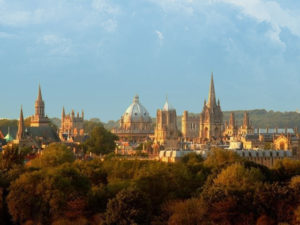
Oxford
City of Dreaming Spires
Guide price $7,390 per person (escorted / based on 2 people)
In addition to all of the above …
Stratford-upon-Avon
An extra day in Stratford provides time to explore the town more fully. Also, a few miles upstream on a bend in the River Avon sits the mighty fortress of Warwick Castle. Originally designed and built in 1068, the castle was steadily expanded until it became one of the finest examples of military architecture of the later Middle Ages. Close by Warwick is Kenilworth, whose magnificent ruined castle is of a similar vintage. It played a pivotal role in many periods of English history, including the Wars of the Roses and the reign of Elizabeth I (who granted it to her alleged lover, the Earl of Leicester, and occasionally visited him there).
Cambridge
The charming city of Cambridge is home to the prestigious University, founded in 1209, that in many ways rivals Oxford (not least in literary connections). Colleges include King’s, famed for its choir and towering Gothic chapel, and St John’s, with its 16th Century Great Gate. Magdalene College houses the remarkable Pepys Library, which holds the original diaries of former student Samuel Pepys in addition to his personal collection of more than 3,000 books. A famous student at Christ’s College was Charles Darwin, who is commemorated there by a life-size sculpture. World-class museums offer exhibits on archaeology and anthropology, polar exploration and the history of science. As with Oxford, though smaller and even more compact, many of Cambridge’s sights can be visited by taking a walking tour.
Some 30 miles south of the city, in the village of Ayot St Lawrence, is Shaw’s Corner. This Edwardian villa, with its beautiful garden, was the home of George Bernard Shaw from 1906 until his death in 1950. The rooms inside the house and his writing hut remain much as Shaw left them.
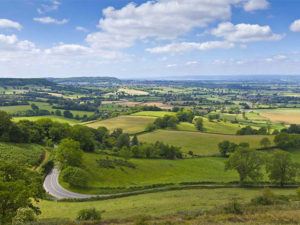
Cotswolds
Area of Outstanding Natural Beauty

Blenheim Palace
World Heritage Site
Guide price $10,150 per person (escorted / based on 2 people)
In addition to all of the above …
Nuneaton
Mary Anne Evans – better known as George Eliot – was born on a farm on the Arbury Estate just outside Nuneaton in 1819 and she lived in the town for much of her early life. Many locations in her novels are inspired by places in or around Nuneaton (although her masterpiece, Middlemarch, is thought to be based on the nearby city of Coventry). In Nuneaton she is commemorated by a memorial garden and statue in the town centre and by a gallery dedicated to her in the Nuneaton Museum & Art Gallery.
Nottingham
DH Lawrence was born in 1885 in the coal mining town of Eastwood, just outside Nottingham (which has been granted City of Literature status by UNESCO). It’s not surprising that an underlying theme in his poetry and novels, in particular Sons and Lovers (1913), is the dehumanising effects of modernity and industrialisation. His humble childhood home is now a museum.
By way of total contrast, the stately Newstead Abbey – originally a 12th Century Augustinian priory – is the ancestral home of Lord Byron (who was, it’s said, “mad, bad and dangerous to know”). The scale of the estate – in Ravenshead – contributed to Byron’s extravagant taste and sense of his own importance. However, the cost of maintaining the place soon caused him and his mother to move to Nottingham and neither of them lived at Newstead for any extended period. Byron died in Greece in 1824 and his body was returned to England for burial in the family vault at the Church of St Mary Magdalene in nearby Hucknall.
